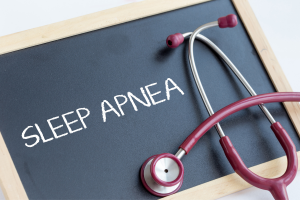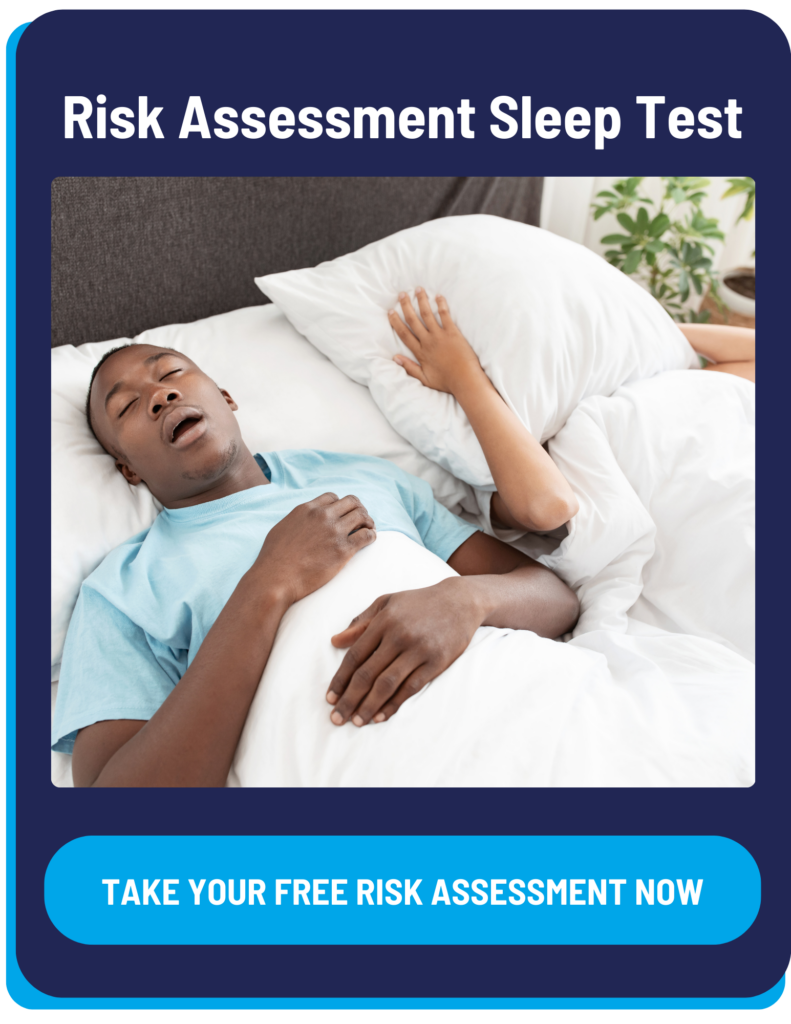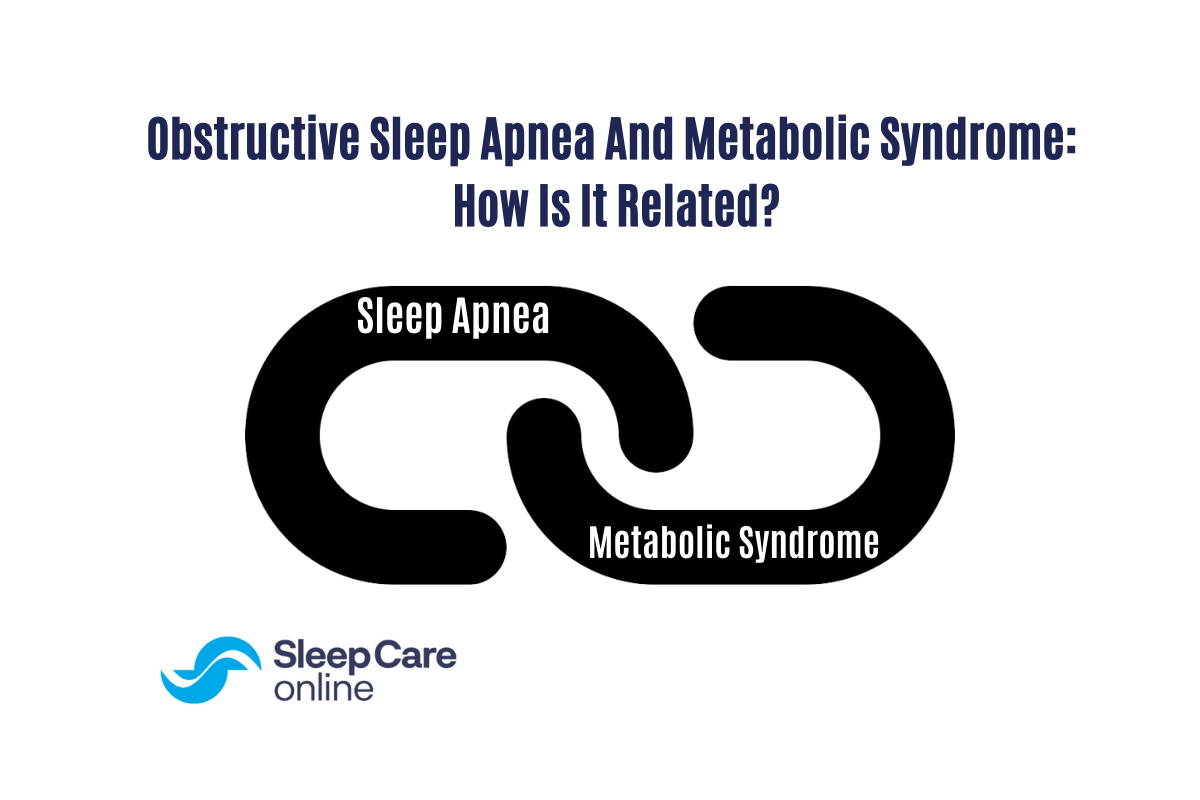If you suspect you have sleep apnea, an effective diagnosis can be conducted in one of two ways: an in-lab test or a home test. Both methods are effective but new developments in-home testing make it easier and more convenient.
Polysomnography
Sleep apnea can be diagnosed using polysomnography, an in-lab sleep study that requires an overnight stay. In-lab studies can evaluate breathing patterns, brain waves, and oxygen saturation levels along with other indicators of sleep apnea. They are able to obtain this information by taping a variety of sensors to body parts to record sleep data. Although painless, this isn’t ideal for those who don’t sleep well in unfamiliar settings, have claustrophobia, or move around a lot during a night’s sleep.
At-Home Sleep Apnea Test
An at-home sleep apnea test can be conducted in the comfort of your own home using Sleep Care Online’s Complete Care Package.
- Schedule a 10-minute telehealth visit with a healthcare provider to discuss your symptoms, upcoming sleep study, test results, and treatment options.
- A multi-night, disposable home sleep apnea test is mailed to your home to be completed at your convenience.
- A physician analyzes the sleep data and provides a prescription if needed.
- Schedule an optional follow-up appointment (additional fee applies).
- We connect you to sleep experts who can offer customized sleep therapy options, assistance in equipment purchase, and initial set-up.
Other Tests That Can Help Diagnose Sleep Apnea
- EEG (electroencephalogram) test is used to record and assess the activity of brain waves.
- EMG (electromyogram) test is used to track the activities of muscles such as teeth grinding, face twitches, REM stage, etc.
- EOG (electrooculogram) test is used to analyze eye movements, which are important for the determination of various kinds of sleep stages, especially the REM cycle.
- EKG (electrocardiogram) test is used to track heart rate as well as rhythm. Additionally, nasal airflow sensors can analyze airflow.
- A snore microphone is used to analyze the activity of snoring.
What Are the Warning Signs of Sleep Apnea?
Know the telltale signs of sleep apnea. They will inform your self-evaluation:
- Gasping for air in the middle of the night
- Morning headaches
- Constant dry mouth in the mornings
- Drowsiness during the day even after a full night’s sleep
- Poor concentration and memory loss
- Irritability and moodiness
- Loud snoring
- Your bed partner may note that you stop breathing in the middle of sleep
While some warning signs like snoring may not necessarily be sleep apnea, several of the symptoms experienced frequently is usually a good indicator of the sleep disorder.
What Are the Risk Factors of Sleep Apnea?
Sleep apnea is related to numerous risk factors. Look for risk factors in your own life that can contribute to sleep apnea.
Obesity
Excessive weight can cause fatty deposits around the airway.
Smoking
Cigarettes can inflame the upper airway. Smokers are three times more likely to have obstructive sleep apnea than are people who’ve never smoked.
A family history
If your relatives have sleep apnea, it increases the likelihood you will too.
Age
The risk for sleep apnea increases as we grow older.
Use of alcohol
Alcohol relaxes the muscles in the airway and contributes to episodes of sleep apnea.
Benefits of A Home Sleep Apnea Test
A home sleep apnea test is an accurate and easy way to get a diagnosis. You eliminate the inconvenience and cost of an in-lab study and get comprehensive follow-up consultation. The lightweight, fingertip-sized device that you use for your home test will not interfere with your sleep. It comes with easy-to-read instructions and results are automatically uploaded to the cloud to be analyzed the next morning.
Can You Self-Treat Sleep Apnea?
There are ways you can reduce the frequency of sleep apnea episodes.
- You may try changing your sleep position. Lying on your back is the worse position for sleep apnea. Try switching to your side or stomach.
- Avoid using sedatives or drinking alcohol around bedtime. Because these substances relax the throat muscles you may actually be promoting the frequency of sleep apnea episodes.
- Try to keep your head elevated while you sleep. By sleeping in a slightly upright position, you can help keep the airway open all night long.
What Lifestyle Changes Can You Make to Prevent Sleep Apnea?
Sleep apnea may be related to your lifestyle. Simple changes and improvements can help reduce sleep apnea in your life.
Lose Weight
Obesity is one of the primary characteristics of most sleep apnea patients. Losing excess weight and maintaining a healthy weight can help reduce the frequency of sleep apnea.
Avoid Smoking
If you smoke, sleep apnea is a good reason to quit. Smoking aggravates the symptoms of sleep apnea.
Maintain a Consistent Sleep Routine
Training your body when it’s time to sleep can help promote healthy sleep.
What Are Natural Remedies for Sleep Apnea?
There are some natural approaches to helping reduce the frequency of sleep apnea. You can try a humidifier in your bedroom while you sleep. Dry air can irritate the respiratory system. Using a humidifier can open your airways, decrease congestion, and encourage clearer breathing.
You can also try an oral appliance. Oral appliances can help with sleep apnea by repositioning your jaw or tongue to keep your airway open while you sleep.
What are the Suggested Treatments for Sleep Apnea?
By far the most recommended treatment for most cases of sleep apnea is CPAP therapy. Once you receive your diagnosis of sleep apnea your doctor will prescribe a CPAP machine. These machines use pressurized air passed through a mask to keep your airway open while you sleep.
While CPAP takes some getting used to, it is one of the most effective ways to manage sleep apnea. Patients using CPAP therapy enjoy more restful sleep, reduced symptoms, and a better life while awake.





